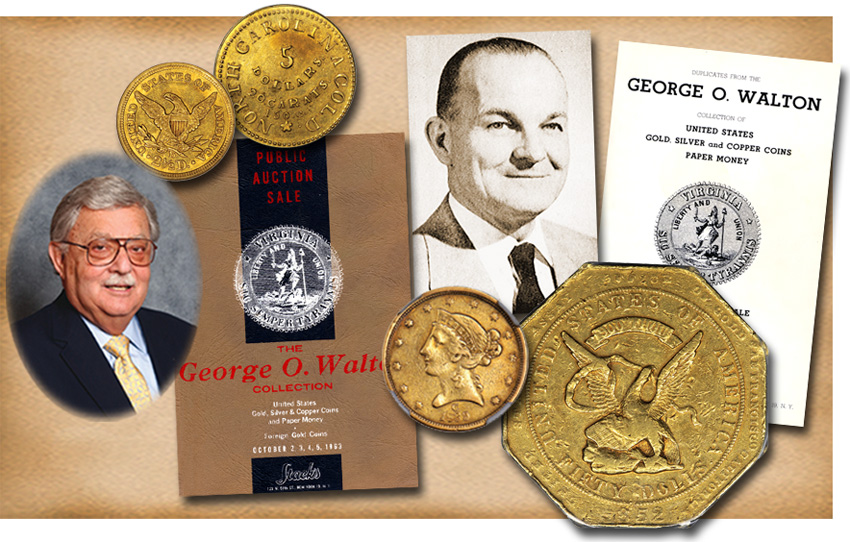
The legacy of George O. Walton is what his collection did for today’s collectors. By accumulating (some might say hoarding) coins from the Charlotte and Dahlonega mints he may have saved many of them from the melting pot. While people in the South did recognize these coins as their “local” currency and saved them, when the U.S. government in 1934 called in gold coins, many of these rarer pieces were turned in and melted along with more common gold. It was lucky that George Walton and other collectors of the period understood the rarity of these coins and sought them out. His trips throughout the South buying coins put many coins in his collection and the collections of those he sold them to, instead of the melting pot.
The same is true, in a way, with Bechtler coins. While they looked different, they were denominated as $1, $2.50 and $5 and were passed in commerce in the local area. The same could be said for Templeton Reid coins. Walton’s purchasing of these items and moving them from commerce to collections.
When the executors of the Walton estate gave Stack’s the coins to sell, we had to break up the collection somewhat so as not to flood the market with these rarer issues. Our first sale consisted of some of the duplicates of the gold coins from the Charlotte and Dahlonega mints, in quantity groups, including lots of five to 10 different coins. This catalog was titled, “Duplicates from the George O. Walton Collection of United States Gold, Silver and Copper Coins/Paper Money.”
The primary collection of George Walton was huge and Stack’s offered it in October 1863. It was full of the choicest coins in all denominations from the C and D mints, plus other $2.50 and $5 gold coins with better grades than those sold in the June duplicates sale.
Also in the Walton “Hoard” were the private gold coins issued by the Bechtler family during the 1830s, which made the gold found in the Carolina and Georgia hills usable as currency for goods and services in that area. The size of this accumulation, in today’s term, is almost unimaginable. George Walton had many hundreds of these pieces, which Stack’s offered in both of the sales, with particularly large lots sold in the October “main” sale.
By having so many coins to offer, collectors at the sale and those who came later had a good supply of these rare federal gold issues, which kept them more affordable. If all these coins had been melted in the 1930s, the cost of the surviving coins would have been many times what they are today. His legacy was to make collecting these coins possible for the numismatists of the future, in much the same manner that the famous Colonel E.H.R. Green saved pre-1834 $5 and $10 gold coins from the same melting pot.
Next week I will tell of how Stack’s worked with the collection to present it for auction in 1963.





